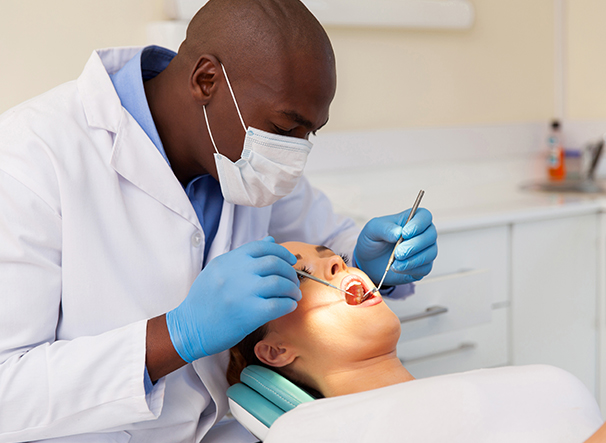
Dental Extractions in Kyle, TX
Reach Dental offers both general dental extractions as well as wisdom teeth removals. Whether you believe you may need an extraction or you know you need one and you’re searching for a qualified dentist in Kyle, our team would be happy to assist. Contact us today!
CONTACT USWhat are the types of dental extractions?
There are two main types of dental extractions: simple and surgical. A simple extraction is performed on a tooth that is visible and easily accessible, typically requiring just local anesthesia and the use of dental tools to remove the tooth. A surgical extraction is more complex, often needed for teeth that are impacted, broken, or not fully erupted. This procedure may involve making an incision in the gum and removing bone around the tooth to extract it.
What’s an impacted tooth?
An impacted tooth is a tooth that has not fully emerged into the mouth or has grown in at an angle, often due to lack of space. This is commonly seen with wisdom teeth, which may become trapped under the gum or bone, or partially erupt. Impacted teeth can cause pain, swelling, infection, and can lead to damage to adjacent teeth. In many cases, surgical extraction is recommended to prevent complications and maintain overall oral health.


What foods should be avoided post-extraction?
After a dental extraction, it’s important to avoid foods that are hard, crunchy, spicy, or hot, as well as those that require a lot of chewing. These can irritate the extraction site or dislodge the blood clot, leading to complications like dry socket. Instead, stick to soft foods like yogurt, applesauce, mashed potatoes, and soups at a lukewarm temperature. Avoid using a straw, as the suction can also disturb the healing process. As healing progresses, you can gradually reintroduce regular foods.
CONTACT USFrequently Asked Questions
How long does it take to recover from a dental extraction?
Recovery from a dental extraction typically takes about one to two weeks. In the first few days, you may experience swelling, discomfort, and mild bleeding, which should gradually subside. The initial healing of the extraction site occurs within 7 to 10 days, during which time the blood clot forms and the gum tissue begins to close over the wound. Following our post-operative care instructions is key to a smooth recovery.
Are dental extractions covered by dental insurance?
Dental extractions are generally fully or partially covered by dental insurance, especially when they are deemed medically necessary, such as for impacted teeth, severe decay, or infection. The extent of coverage depends on the individual insurance plan and whether the extraction is considered a basic or major procedure. It’s important to check with your insurance provider to understand the specifics of your coverage. Our practice also offers a variety of additional flexible payment options that patients are welcome to utilize as well.


